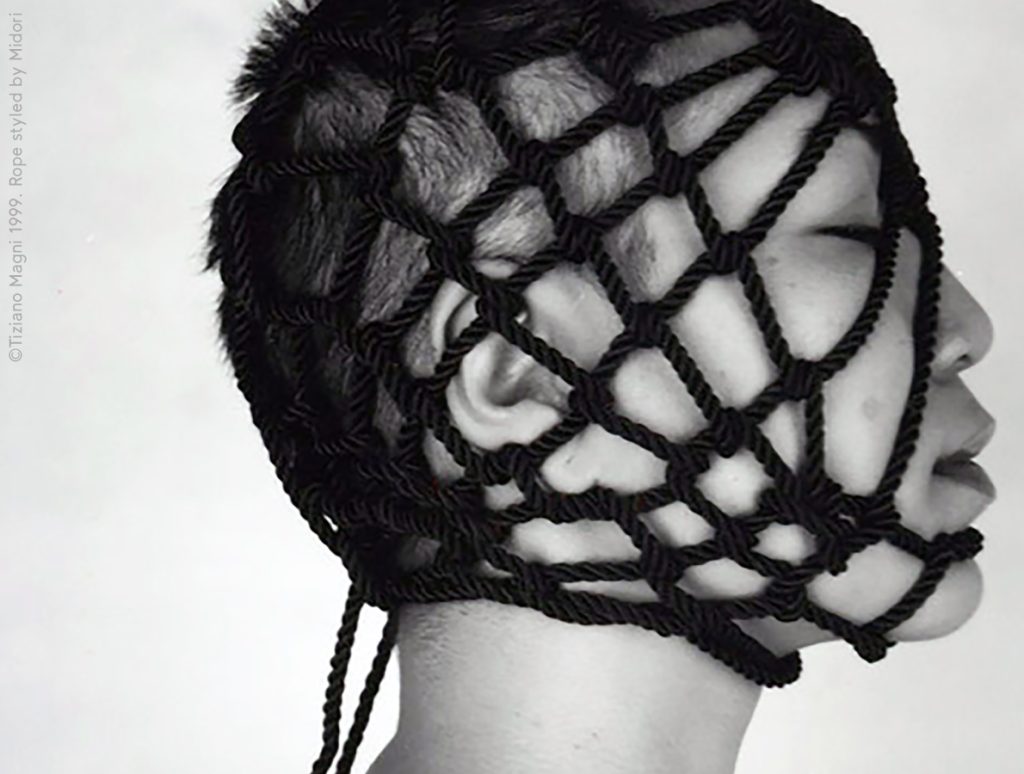Kinbaku is a Japanese word meaning ‘to bind tightly’. Rope has played an important role in Japan for thousands of years. But it was used not only to perform our daily tasks but also for spiritual purposes. ‘Kinbaku bi’ is also a Japanese term meaning ‘beauty of tight binding. Kinbaku is a type of Japanese bondage or BDSM, that is used for both aesthetic & sexual benefits. Let us tell you about Kinbaku, its history & popular techniques in detail:
What is Kinbaku?
- Kinbaku uses ropes to tie the body in intricate patterns to drive bodily pleasure. It involves tying a person in appealing erotic patterns using multiple pieces of thin ropes. These ropes are made of hemp, jute or linen. These ropes are generally between 700 cm to 800 cm long and approximately 0.4–0.6 cm in diameter.
- A famous kinbaku expert explained that the art takes so many years to master. That’s why it is difficult to see kinbaku in pornography today. The natural fiber rope used in it is called ‘Aasanwa’. The western nations use a separate term for bondage art-‘Shibari’ instead of kinbaku, which does not refer to any specific type of tying in Japan.
- When obscenity entered print media, this underground bondage culture began to be published in many magazines through erotic pictures & illustrations. Moreover, Kinbaku bi got an audience in popular magazines such as Uramado and Kitan Club. It has since gained a loyal following, which can be seen with increasing sales of the magazines. Nowadays, kinbaku has become so popular that it is even played as a stage performance in the contemporary art world.
Historical Background of Kinbaku Culture:

- During the Edo period, rope bondage was not used as a sexual art but as a form of punishment. At that time the ‘shrimp tie’ technique was developed to punish prisoners or criminals. In the early 1900s, bondage turned into a sexual art. At that time, Kabuki theater began to stylize this torture bondage, known as hojojutsu, and add it to their acts & series. Hojojutsu needed to be slowed down for safety reasons and to make it visually attractive to the audience.
- Taking it to the next level, Kabuki theater has modernized the art of rope bondage in its highly stylized performances. These techniques of hojojutsu were re-imagined and recreated on stage as kinbaku. This redesigned version is more aesthetic and provides a more engaging viewing experience to the audience.
- After World War 2, popular magazines in the Pacific featured kinbaku in provocative illustrations & later through photographs. In the 1960s, Eikichi Osada began performing live sadomasochism shows, often involving large amounts of rope bondage. Over time, Kinbaku has become popular in its own style in the Western BDSM scene.
Shibari vs Kinbaku: What’s the difference?

- The word ‘shibari’ came into common use in Western countries in the 1990s, meaning ‘to tie (anything).’ While the word -kinbaku discussed above means ‘to bind tightly (Japanese rope binding only).’ Some people still say that both are the same thing; kinbaku vs shibari. Even in Japan, people use both the words equally.
- As per the western experts, shibari is more directed towards intricate decorative patterns, display of the body & aesthetics, while kinbaku is more about what is happening between partners, it is more intimate & sensual.
- Shibari has been used as a relaxation, meditation, and trust-building technique between two people. It involves tying any person with ropes. Sometimes it also involves intimate activities between couples for fun & enjoyment.
Types of Rope Used in Kinbaku:
- In kinbaku, a loose three-strand jute rope called ‘asanawa’ is most commonly used in Japan. Asanawa is a combination of three words, viz., Asa means ‘hemp’, and Nava means ‘rope.’ Is asanava. A general term referring to a range of natural fiber ropes. Over time, a variety of ropes have come to be used for kinbaku, but most commonly jute.
- The rope used in Kinbaku practice is approximately 6-8 meters in length. On the contrary, in the Western countries, due to the big body, ropes of about 7-8 meters long are used. Ropes made of cotton & other synthetic materials are prevalent in western countries.
- People also use various techniques to soften natural fiber ropes. People in western countries also use colorful ropes made of synthetic materials because of their ease of washing. The most common standard length is 10 meters and is available from many vendors in the US.
Driving Pleasure through Japanese Bondage

- During Kinbaku, the position of the person being held in prison is also very important as Japanese bondage uses a variety of patterns and forms to induce relaxation. Difficult situations are deliberately used to obtain more pleasure. The Japanese care very much about the way the kinbaku rope is wrapped.
- Let us tell you that the Japanese traditionally use natural vegetable fiber rope (jute, hemp, linen) as a bondage technique. But contemporary Japanese experts have also used a range of rope materials. The advantage of using natural fiber is that it binds both individuals tightly to each other. Its knot gets tightened with rotation.
Conclusion:
Kinbaku uses specific rope patterns, many of them developed by hojojutsu ties. Kinbaku has also been featured in Western pop culture. Shibari has been discussed in many books and articles, but evidence of kinbaku in the literature is limited. Many of the techniques adopted in Kinbaku cause harm to the person as well as driving pleasure out of it. Kinbaku has made a good presence in the work of some of the most famous contemporary artists in Japan. If we talk about shibari; it is an art with a rich history. It offers many other benefits besides sensual pleasure. Therefore, both terms are used interchangeably in Japan & Western countries.
